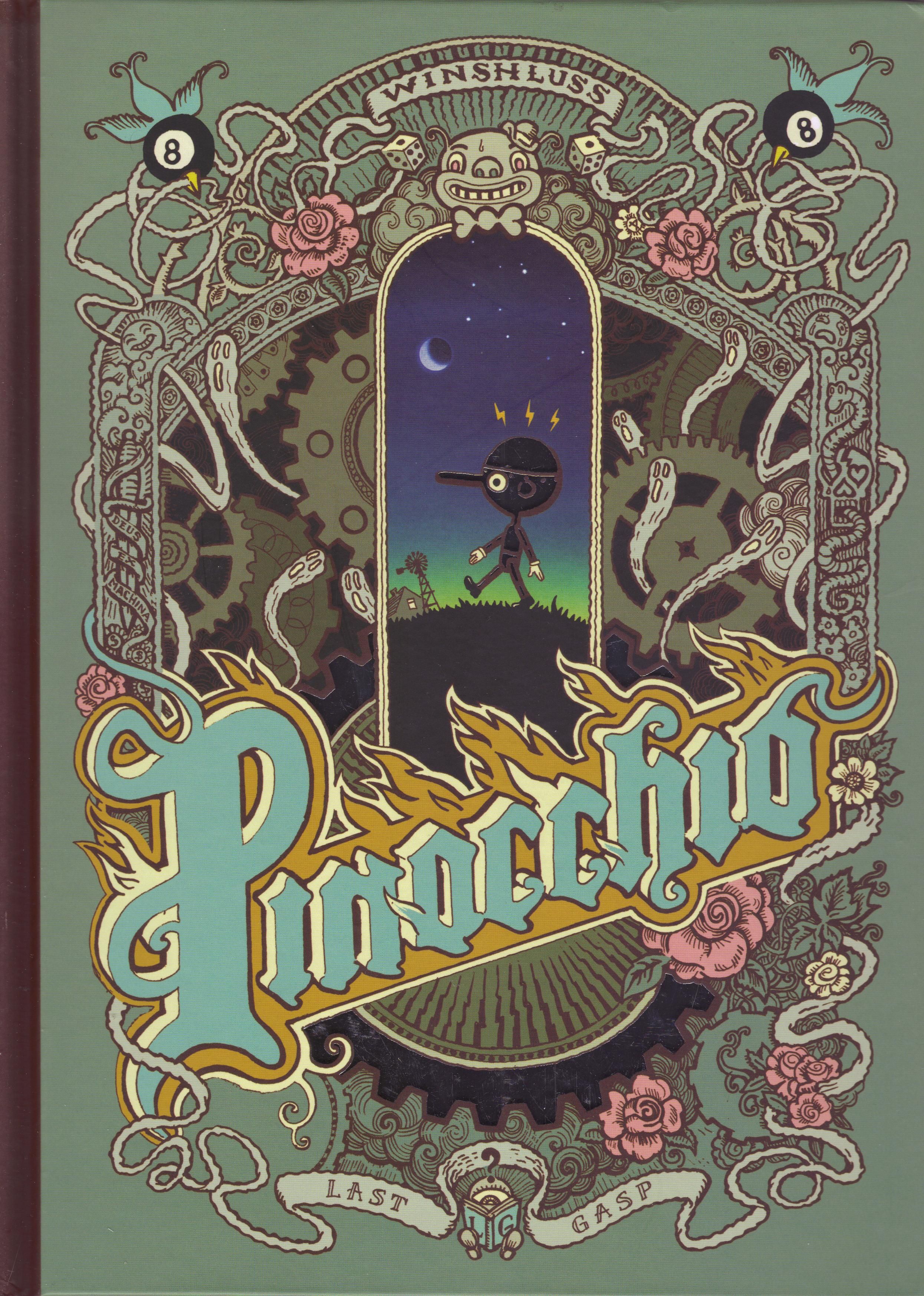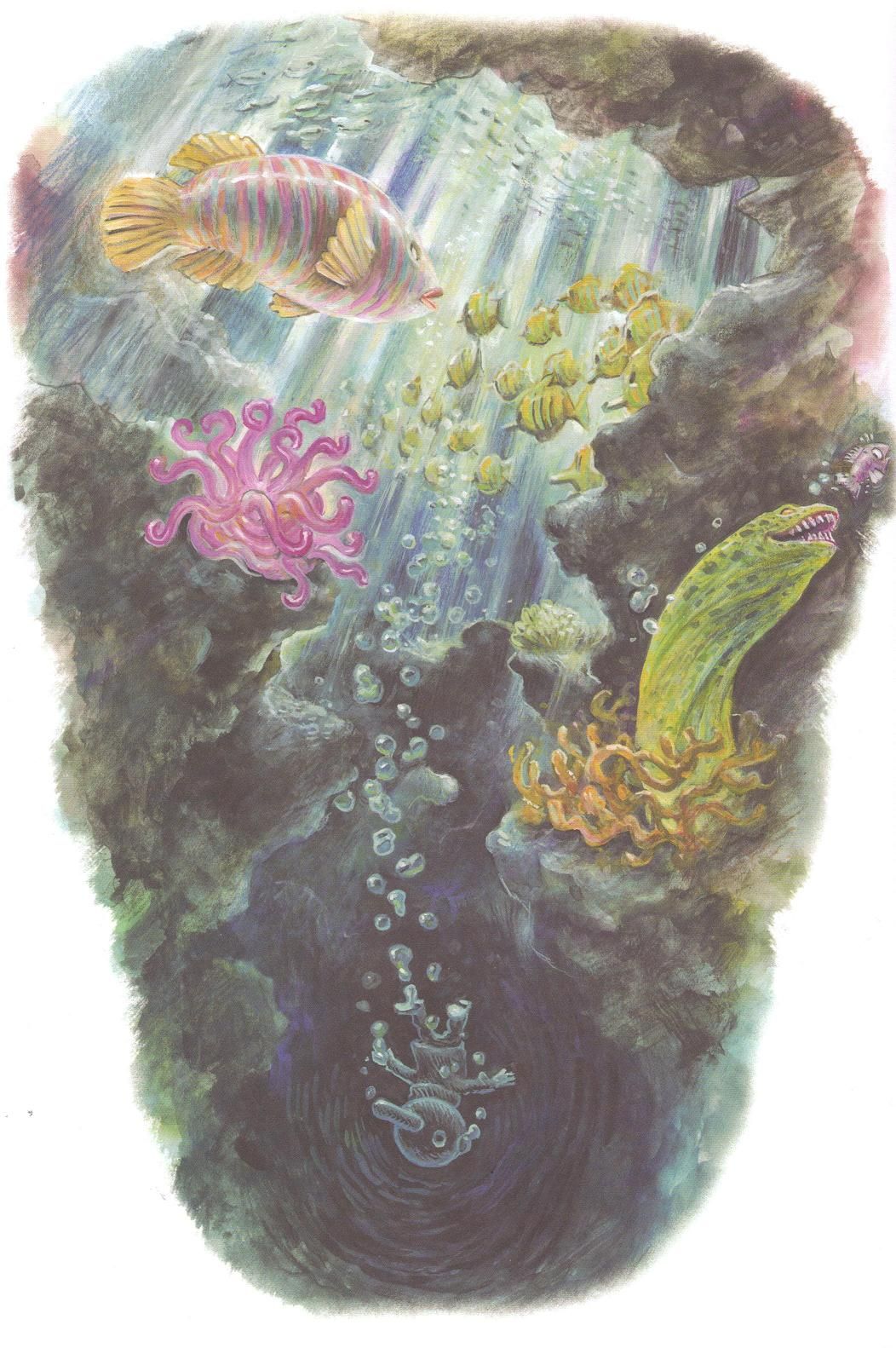Here's a big thick European comic. We all love those, right?
Pinocchio is a graphic novel by Winshluss (not his real name, obviously), colored by Cizo (also not his real name, again obviously), with coloring assists from Frederic Boniaud, Thomas Bernard, and Frederic Felder, and published by Last Gasp and Knockabout. It costs thirty dollars, but it's a giant-sized comic and it's 188 pages long, so it's a pretty good deal.
Plus, it's European. Those Europeans sure know how to make good comics, right?
Pinocchio is copyrighted 2010, but I'm not sure when Winshluss wrote/drew it, because apparently it's taken some time to make it to our shores, because publishers were worried about the insidious reach of that evil corporation that owns Marvel getting their panties in a bunch about it. As if they own the damned character. Why would they react poorly? Well, Pinocchio is a twisted, darkly humorous, sexually charged novel that presents the familiar characters from the children's classic in far less-than-flattering ways. But, when you think about it, the original Pinocchio was a bit twisted, too, so what the hell, Disney?
The premise of the book remains more or less the same. A man named Geppetto builds a boy, but this one is constructed out of metal and therefore is, naturally, a robot. Geppetto wants to sell the design to the army, as Pinocchio (who's never actually named) contains all sorts of hidden weaponry. Before he can, however, Pinocchio kills Geppetto's dissolute wife (who uses the robot, briefly and fatally, as a sex toy) and wanders off. So begin his adventures! Meanwhile, a drunken Jiminy Cockroach has taken up residence inside Pinocchio's head, and Winshluss checks in on him every so often.
The narrative is built rather well - the book begins with a guy dumping toxic waste into the ocean, which will eventually create Dogzilla, the creature that swallows Geppetto and later Pinocchio. After that, we get a suicidal guy looking through the window at a woman working out and playing Russian roulette with his cat (he survives, but the cat doesn't). Who this guy is doesn't become apparent until much, much later. Winshluss, meanwhile, has fun following Pinocchio around - the robot boy never speaks and is largely oblivious to those around him, which allows everyone to use him as they will. Two hobos sell him to a toy-making factory that uses child labor. Pinocchio ends up with seven rather short gentlemen who are keeping a young sleeping lady in their house (and, of course, having their way with her).
She wakes up and escapes, leading to further adventures. Meanwhile, our erstwhile hero gets onto a blimp, where a punk kid is stowing away. The punk kid takes Pinocchio to the Enchanted Isle, which turns out to be a poorly-run kingdom that is about to experience a coup d'etat. Pinocchio gets himself hanged, which doesn't bother him at all, and we see the course of the new dictatorship from the perspective of his gallows (which happens to be a giant candy cane) as months pass by, the dictator rises and falls, and Pinocchio eventually moves on because the rope holding him breaks. Pinocchio ends up in Dogzilla and is reunited with Geppetto, who then takes him back to the army, where Pinocchio goes on a killing spree (thanks to Jiminy Cockroach, who unknowingly triggers it when he "repairs" some circuitry in Pinocchio's head). Separated from Geppetto again, Pinocchio is shot into the moon, then drops to earth in the barn of a couple whose first baby died in childbirth. They take him in and he becomes a "real boy," although even this "happy ending" is tinged with foreboding.
Winshluss does a marvelous job connecting every single character with each other, so people we thought we would never see again show up at strange times. He doesn't only tell the story of Pinocchio, but of Geppetto, the two hobos, the punk kid, the "seven dwarfs," the sleeping lady, and the Russian roulette-playing man. They all have their part to play, and the most interesting part of the book is to speculate how Pinocchio is the unwitting catalyst of so much change in their lives, both good and bad. This book almost functions as an example of sensitive dependence on initial conditions - otherwise known as the butterfly effect - as Pinocchio moves through the world, changing so much but remaining static himself. The book, plot-wise, is quite odd, as Winshluss doesn't really care about narrative structure. The book is straight-forward, to be sure, but Pinocchio's inert presence at its center turns this into a wild, absurdist masterpiece, with Jiminy Cockroach, a frustrated writer in his own right, providing cynical commentary as he struggles to write instead of drinking himself into a stupor.
He's a miserable and misanthropic bastard and doesn't even provide much comic relief (unless I have a much different sense of humor than Winshluss does), but his oddball adventures provide an interesting contrast to Pinocchio - while the robot is passive for one reason and effects change that way, Jiminy is passive for other reasons and effects no change whatsoever - the final image of the book is him returning to his dissolute lifestyle after seeing some hope for change. Pinocchio's path to a nirvana is different, and he may not stay for different reasons, but the underlying point of the book seems to be that one can't change who one is and one shouldn't even try. People are trapped in their roles, and even a force of nature like Pinocchio can't change events too much.
Winshluss tells the story beautifully, too. More than half of the book is wordless, so his art needs to tell the story well, and it does. It's intricately drawn, with a great deal of detail in each panel and each page, facial expressions that run the gamut of human emotions, and nice stylistic shifts as well. Pinocchio's adventures are in gorgeous color, while Jiminy's life inside Pinocchio is rendered in black and white and simpler pencil linework. Intermittently we get a full-page panel done in (presumably) some kind of colored pencil (it doesn't quite look like paint), breaking up the narrative with a stunning freezeframe of art, even though Winshluss manages to tell part of the story is these images as well (the most notable being the ones in which Pinocchio hangs, inert, while the dictator's regime rises and falls behind him). When he draws "Snow White's" fate, he also switches to colored pencils, the better to contrast the "fairy-tale-ness" of the artwork with the grim reality of her journey. For flashback scenes, the pencils are not as rough as in the Jiminy Cockroach pages, but rougher than the "present" pages, which adds to the nostalgia associated with them - an impression made greater by the sepia tones used to colors them. In many ways, this has a very "underground comix" feel to it, with caricatures and raunchiness and many "ugly" people, but Winshluss is a better artist than many, and the way he and the colorists shift easily from rough to lush pencils is breathtaking and raises this book above what I consider "underground comix."
The last time I got into the stereotypical portrayal of a black character, I got in some trouble, so let's just say the one misstep is the black hobo and leave it at that. Yes, a few other characters in the comic have full lips, but the fact that the only black character is portrayed stereotypically is something that I'm simply going to mention and move on. So let's do so!
Pinocchio is a wild and wacky comic with a lot of dark undertones and beautiful artwork. It's certainly a spiritual if not a direct descendant of the original story, and that means it's a lot more twisted than the Disneyfied version many Americans are familiar with. While Winshluss takes potshots at easy targets (the military, organized religion), he's also showing us a dangerous and downright creepy world where any innocence is crushed and only the aloof robot can make it out alive. Even the happy ending can be seen as a brief calm before the inevitable tragedy. Pinocchio is a wicked comic, but its nastiness makes it compelling, its artwork makes it stunning to behold, and it's quite the experience to read.



